If you are using Chrome, click the red hand button at the top right of the screen:

Then select: Don't run on pages on this site
If you do it correctly, the red hand will turn to green and you will no longer see this message.
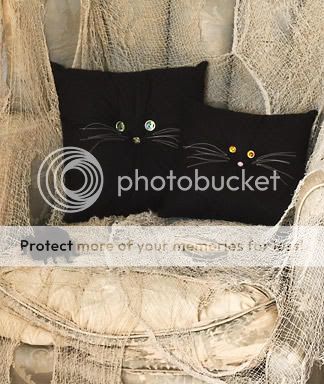
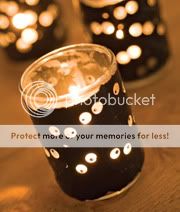
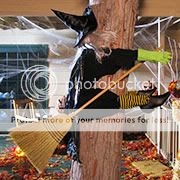

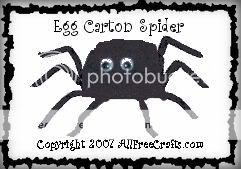
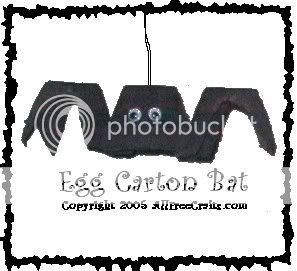
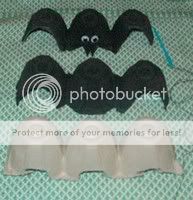

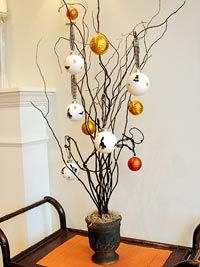




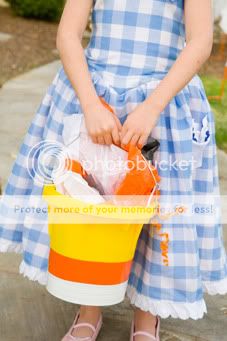

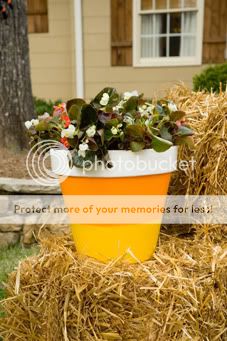
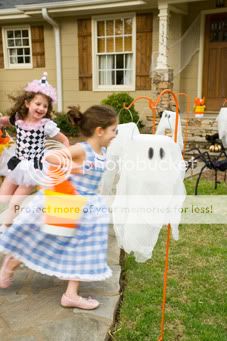

You can watch The Kindred on Veoh TV for free if you sign up for a free account.
You can watch Roswell season 1 for free on Hulu
You can watch True Blood for free on surfthechannel
You can watch several of the WB's old shows here TheWB
I believe you can watch some of the Lost episodes on ABC.
If you check surfthechannel, I am sure that you can watch all of the seasons on there.
If you are looking for some free virus protection, check these websites out.
AVG
We use this on our work computer. It works really well. I believe this lasts for a year.
Avira
I use this one on my home computer. It works really well. I believe it lasts for a year.
for a really good sweeping program,
Sweepi
You can watch a lot of TV series's and movies on Youtube
I also believe Desperate Housewives can be watched from the ABC and TV offers a vast of TV series if you sign up for an account.
Also South Park episodes can be watched from: SouthPark
If you go to IMDB you can watch free TV series and movies.
I know you can play free games on Yahoo and MSN, but you can also play free games at Addicting Games.
Free graphics programs:
Gimp
Serif
Apophysis Fractal Software
Here are some other freebies you guys may be interested in.
Free logo and text maker
Cooltext
Free OpenOffice, it's like Word
OpenOffice
Free graphics software with style
Cenon
Free 3D graphics software
Blender
ENVIRONMENTALLY-FRIENDLY CLEANING PRODUCTS
By Eileen Hartman, Home Economist
Inexpensive "old-fashioned" substances can easily replace more toxic cleaners and chemicals around the house.
Remember, even nontoxic cleaners are not for human consumption. Keep out of reach of children. Do not mix compounds; for example, ammonia and bleach react to form deadly fumes.
Six Safer Substances
These are the Big Six of environment friendly cleaning. All are safer than their manufactured chemical counterparts, but some still need to be handled with care.
Vinegar removes mildew, stains, and wax buildup. Use it to clean coffeepots, glass, paintbrushes, grout, windows and fireplaces.
Pure Soap cleans everything from dishes to cars.
Baking Soda the all-around champion. Baking soda cleans, deodorizes, scours, polishes, removes stains, and softens fabrics. Use it on plastic, vinyl, carpeting, and upholstery, on silver and stainless steel, inside refrigerators or down drains.
Borax cleans wallpaper, painted walls, and floors. It deodorizes, removes stains and boosts the cleaning power of your detergents.
Washing Soda cleans clothing and softens water. But it is moderately toxic. Wear gloves and use it in well-ventilated areas to avoid irritation of mucous membranes.
Ammonia is a hard working liquid, cleans carpets and linoleum, copper and enamel and most appliances. Ammonia can irritate the skin and the eyes, so wear gloves and use it in a well-ventilated area. Never mix it with chlorine bleach; the mixture creates a poisonous gas.
Environmentally Friendly Cleaning Alternatives:
All Purpose Cleaner #1
125 mL ammonia 1/2 cup
75 mL washing soda 1/3 cup
4 L warm water 16 cups
All Purpose Cleaner #2
50 mL baking soda 1/4 cup
250 mL ammonia 1 cup
125 mL white vinegar 1/2 cup
4 L warm water 16 cups
Heavy Duty Polish for Floors and Furniture
15 mL carnauba wax 1 tbsp
500 mL mineral oil 2 cups
Heat in a double boiler, cool, then apply with a soft rag. Carnauba wax can be bought at auto-supply stores or hobby shops.
Furniture Polish #1
This is for furniture that's been varnished, lacquered, or shellacked.
25 mL olive oil 2 tbsp
15 mL white vinegar 1 tbsp
1 L warm water 4 cups
Mix ingredients and put into a spray bottle. The polish works best when warm; heat by letting the bottle sit in a pan of hot water. After applying, rub dry with a cloth.
Furniture Polish #2
Use this on furniture that doesn?t have a protective hard coating.
15 mL lemon oil 1 tbsp
1 L mineral oil 4 cups
Put in spray bottle.
Spray on, rub in, then wipe clean.
Descalers
Removing the scale that accumulates in your kettle or iron will increase its energy efficiency by helping it to work faster. Use a solution of one part white vinegar, two parts water. Pour some into your electric kettle and let it boil; rinse the kettle thoroughly. For your iron, pour in some of the solution and let it stand for 30 minutes; rinse several times.
Dish Detergent
500 mL grated hard bar soap or soap flakes 2 cups
4 L water 16 cups
Rub salad oil on grater before grating bar soap; it will be easier to clean.
Place soap in a pot, add water and stir. Heat over medium heat until the mixture boils, stirring occasionally. Remove from heat and let cool. Store in tightly covered container. (Not for use in automatic dishwashers.)
A homemade substitute for automatic dishwasher detergent can be made using equal parts borax and washing soda; increase the amount of soda if water is hard.
Bleach, Hydrogen Peroxide
1 part hydrogen peroxide
8 parts water
Soak garments in this solution, then rinse.
Fabric Softener
Adding 50 mL (3 tbsp) baking soda to the wash cycle, or 50 mL (3 tbsp) vinegar to the rinse cycle, will soften your laundry just as well as the costly commercial liquids.
Soak lightweight cloth in diluted laundry softener and place in dryer with wet clothes.
The cloth can be used over and over; softener is also conserved.
Drain Cleaner - Non-Caustic
250 mL baking soda 1 cup
250 mL salt 1 cup
125 mL white vinegar 1/2 cup
1 kettle boiling water 1
Pour baking soda, salt and vinegar down drain and leave for 15 minutes. Pour on boiling water.
To keep your drains clear pour about 50 mL (3 tbsp) salt down the drain, followed by a kettle of water, once or twice a week. Instead of the salt, you could use 50 mL (3 tbsp) washing soda, or 50 mL (3 tbsp) baking soda plus 50 mL (3 tbsp) vinegar.
Laundry Powder
250 mL pure soap flakes or powder 1 cup
25 - 50 mL washing soda 2 - 3 tbsp
Oven Cleaner
250 mL ammonia 1 cup
750 mL boiling water 3 cups
Ammonia fumes are dangerous - although not as toxic as the gases given off by aerosol oven cleaners. The kitchen doors and windows should be open while you?re using ammonia.
Warm the oven to 100 degrees C. Place boiling water in the broiler pan on the bottom shelf. Put the ammonia in a small dish on the top shelf. Shut the oven door and leave overnight. Before you open the oven again open all doors and windows, and leave the room while the vapors clear. Wash the oven with baking soda and water.
Scouring Powder
50 mL pure soap flakes or powder 3 tbsp
10 mL borax 2 tsp
375 mL boiling water 1 1/2 cups
50 mL whiting (a chalk powder) 3 tbsp
Dissolve the borax and soap in the boiling water. Cool to room temperature, add whiting, and pour into a sealed plastic or glass container. Shake well before using. If you want it to be more abrasive, add more whiting, 15 mL. at a time until it's right for you.
Toilet Bowl Cleaners
A safe all purpose cleaner, used regularly, will keep the toilet bowl clean.
To remove stains, mix borax and lemon juice to a paste. Wet the sides of the toilet bowl, rub on the paste, and let it stand for about two hours before scrubbing it off.
Ammonia - Peroxide Toilet Bowl Cleaner
5 mL household ammonia 1 tsp
250 mL hyrdogen peroxide 1 cup
2 L water 8 cups
Mix ingredients in a bucket and pour mixture into toilet. Let stand for 30 minutes, then scrub toilet bowl with long-handled brush and flush. The cleaner can be left in the bowl for several hours if needed to remove hard stains.
Rug and Upholstery Cleaner
Greasy soil and odours can be removed from carpets by sprinkling then generously with a mixture of two parts cornmeal and one part borax. Leave for an hour, then vacuum thoroughly. For spills, sponge the rug promptly with a mixture of vinegar and water. Then sponge with clean water, and pat dry.
Source: Canadian Green Consumer Guide
For more information on environmentally-friendly cleaning , check out the Soap and Detergent Association's website at: www.cleaning101.com
Part 2
Safer Suds
Glass Cleaner
In a spray bottle combine vinegar with water at a 2:1 ratio or use straight vinegar. Spray on; wipe off with old newspaper. For greasy fingerprints, combine vinegar with a squirt or two of liquid vegetable-oil-based soap.
Sink Scrubber
Scrub with baking soda or Borax. Bon Ami also works scrubbing wonders. (Use care on fiberglass.)
Disinfectants
Tea tree essential oil, Borax, or vinegar.
Toilets
Pour 1 cup Borax into bowl. Let sit overnight. Scrub. Or pour 1 cup baking soda into bowl. Add 1 cup distilled white vinegar. The mix will froth and then you're ready to scrub.
Floor Cleaner
Pour 1/2 cup washing soda, 1/2 cup vinegar and 2 tablespoons liquid soap into a bucket filled with 4 galloons of hot water.
Furniture Polish
Melt 2 1/2 ounces olive oil, 1 1/2 ounces coconut oil, and 1 ounce each beeswax and carnauba wax. Add 4 ounces distilled water and blend. Rub the mixture on the furniture with a soft cotton cloth.
Dusting Solution
Combine 1/8 cup lemon juice with 1/4 teaspoon olive oil. Dip a cotton rag into the mixture and dust away.
Fabric Softener
Baking Soda.
Oven Cleaner
Spay water over the oven bottom; cover with a layer of baking soda. Let sit overnight. Wipe clean .
Information adapted from Clean & Green and Better Basicsfor the Home by Annie Berthold-Bond.
Has your doctor (or mom) ever told you to stay away from chocolate, red wine, tea and coffee? Well in excess they're right, however in moderation they may just save your life.
Modern research shows that not all tasty and sugary things are bad.
A daily 16oz coffee drink (caffeinated or decaf) has been shown to lower your risk of Parkinsons by up-to 50%, skin cancer by 5% and reduces your risk of colon, breast and prostate cancers also.
2-5 cups of green or chamomile tea each day decreases your risk for heart disease, Alzheimer's, autoimmune diseases, lowers LDL (bad) cholesterol and increases the production EGCg an enzyme that prevents/slows cancer cells from growing.
1/2 a bar per week of dark chocolate (70% + cocoa) can lower your risk of cancer, cataracts, stress and it's complications it also helps your memory.
1 glass of red wine each night (not hard liquors or beer) helps decrease the potential for developing cancer, heart disease, lowers stress and it's complications. Cabernet Sauvignon, Petite Syrah/Sirah and Pinot Noir are the best types.
The active medicinal parts of these foods are called antioxidants. If you already have these conditions I would suggest having a consultation with your doctor before engaging in "indulgent health care." Alcohol may decrease the effectiveness of certain medications and can cause liver failure if you are taking products with acetaminophen (Tylenol) in them.
While these products can be very beneficial to your health and increase your lifespan they must be taken in moderation. Eating/drinking to much of these foods can cause other illnesses including migraines, complications due to underlying diabetes, high blood pressure and increase risk of bleeding due to aspirin use or other "blood thinners."
Drinking a cup of hot sassafras tea after a long week of work will help perk you for the weekend.
Ever wish you could drink a cup of magic potion to alleviate that headache or soothe those nerves after a long, exhausting day? Herb teas, called tisanes, may be as near a potion as you'll ever find, offering an incredibly wide variety of flavors and medicinal uses.
Old-fashioned horehound tea, for example, is considered good for colds and sore throats. Elder tea, which smells and tastes like lilacs, can be helpful to asthmatics and those with skin trouble. Spicy sassafras tea makes an excellent spring tonic. If your main interest is getting hooked on a delicious herb tea—as opposed to a caffeine-plagued coffee or tannic-acid-filled tea—you can try an assortment of teas, from lemon to licorice to apple. Serve them steaming hot in fall or winter, or refreshingly iced in summer—and sweeten with honey if desired.
To introduce yourself to herb teas, purchase a quarter-ounce of several different types of tea herbs. If you purchase them at an herb shop or farmers' market, make sure each package of herbs is labeled or otherwise marked so you'll know what it is when you get home. Most herb teas come in tea bags as well. Note: Use equal parts of caution and common sense when consuming herbs as you would with any type of medication. In the beginning, don't overdo the strength of your beverage mixture or the amount you drink.
Preparation
To use loose herbs, you'll need a tea bob or strainer and a glass or porcelain container with a tight-fitting lid. Add one teaspoon of the herb or herb mixture to one cup of boiling water and steep in container for five minutes. (Amount of tea and steeping time can be adjusted to taste.) If making only one cup, cover with a saucer while brewing. Metal teapots without linings, such as those made from aluminum, are not suitable because traces of the metal can contaminate the herbs.
For iced tea, add four to eight teaspoons of herbs (according to taste) to a quart of boiling water. Steep for approximately five minutes, let cool, and serve over ice. If you like a richer, stronger taste throughout the course of your drink, make and freeze some herbal tea in icecube trays ahead of time to add to your glass.
Another refreshing option is sun tea: Add four to eight teaspoons of herbs to a quart or so of cold water in a clear glass container and place in the sun for two to six hours. Chill and serve over ice.
Infusions are made only from the leaves and flowers of herbs, which release their volatile oils when steeped in a teapot of boiling-hot water. (If the herbs are simply boiled, the oil evaporates.) Crush one teaspoon of dried herbs for every cup of wa ter and put into teapot with an extra teaspoon added for good measure. (You can also use a handful of fresh herbs.) Pour boiling water over the herbs and let stand five to 15 minutes until it reaches the desired strength.
All seeds and roots, and the leaves of a few herbs such as horehound, lemon balm, and bee balm, must be boiled to extract their volatile oils. To make a decoction, first crush the roots or seeds, allowing one teaspoonful for each cup of water and one for the pot. Boil the herbs for 15 to 20 minutes in a glass or porcelain container. Seeds, roots, and bark such as sassafras may also be percolated like coffee. Decoctions are often used in preparing medicinal herbs.
For a real hot blast, heat your teapot before adding boiling water for an infusion or pouring in a decoction. Or do as the English do: knit or sew a "tea cozy" to cover and insulate your teapot.
A Garland of Teas
ALFALFA: The seeds and leaves of this valuable herb are packed full of vitamins A, D, E, and K. Alfalfa is also considered to be one of the best sources of essential minerals.
It also contains eight known enzymes and makes a mild, grassy tisane that can be flavored with mint.
ANGELICA: Known in the past as the "root of the Holy Ghost," this heavenly aromatic variety reputedly sweetens the digestive tract and strengthens the heart, cure the top plate and roof to the footings. Then cover all of the straw walls with netting or 1" chicken wire before adding the finish of cement plaster and stucco.
For hair and scalp treatment.
Apply Really Raw Honey (with or without olive oil) to dry or damp hair about one half hour before washing
For dental care and mouth sores.
Cleans teeth, mouth and dentures and stops bleeding gums. Canker sores, blisters and mouth ulcers respond
Honey is antiseptic, antibiotic, antifungal, and antibacterial -- it never spoils!
Honey is good for soothing a sore throat :)
Honey with lemon works well, also. In tea or straight, it will sooth and refresh you.
Just squirt a few teaspoons of honey into your mouth and follow with some fresh lemon.
Maintaining good health on a daily basis should be your goal, but sometimes you want a substance to help you deal with the immediate symptoms. There are many alternatives to pills. Here are some.
Vinegar —We use only raw apple cider vinegar. We have used it externally on insect bites, and we routinely add about a tablespoon to each quart of drinking water. Vinegar water helps you deal with heat and stress much better. It affects the hypothalamus, which affects the body's cooling system. Before camping trips, we drink as much vinegar water as possible and we find that we get much less bothered by mosquitoes. Whole books have been written about the healthful uses of vinegar, such as Folk Medicine by D. C. Jarvis, M.D. (Holt, Rinehart and Winston, 1946).
Garlic —Adding garlic and onions to your diet is a delicious way to eat your medicine. According to many studies, garlic reduces cholesterol levels. Other studies have shown that garlic, and other members of this family, such as onions, are effective in reducing high blood pressure, preventing heart attacks, strokes, and flu, and even in protecting the body from certain urban pollutants. Numerous helpful chemicals such as allicin, an antibacterial substance, and selenium have been identified in garlic. To take advantage of garlic's many virtues, simply eat it.
Raw Honey —Honey is a great addition to your wilderness first aid kit. It doesn't just make campfire coffee drinkable. Various studies have shown that raw honey, applied topically to open wounds, causes wounds to heal faster than the wounds of control subjects. Additionally, infections were less likely to occur when honey was applied. Researchers reported in the American Journal of Surgery that these results were due to honey's hygroscopic, bactericidal, and energy-producing properties. But be sure to get raw honey, not the boiled or pasteurized kind.
Aloe Vera —Aloe vera has long been used as a safe and quick method to treat such skin problems as sunburn, poison oak rash, stove burns, cuts, scratches, and diaper rashes. It's a great first-aid plant to grow in your kitchen or yard since it is so versatile.
Researchers have also found numerous beneficial qualities to consuming aloe beverages, which is why you can buy aloe drinks in most health food stores. One benefit of aloe is that it is very cooling to the entire system, according to Dr. David Frawley, a specialist in natural healing. He suggests drinking a teaspoon or two of aloe vera gel before meals and before bed. Pre-bedtime ingestion has long been recommended for women for the alleviation of the symptoms of menopause.
Wild Foods —Some common wild foods that are veritable vitamin and mineral tablets include dandelion, curly dock, lamb's quarters, and purslane. Data from the USDA shows that all of these are extremely rich in vitamins and minerals.
One of the richest non-meat or dairy sources of calcium is carob pods, which are grown as ornamental street trees throughout much of the West, South, and Southwest United States. Pound per pound, carob contains about three times as much calcium as milk.
Bay Leaf —Do you suffer from indigestion after meals? Perhaps you ate too quickly. Perhaps you combined the wrong foods. Obviously, you should correct those behavior patterns, but now, in this moment, how should you deal with the pain? Rather than reach for Alka-Seltzer, try a cup of bay leaf tea.
Hot Peppers —During the winter months when Christopher experiences a cold or the onset of a flu, he has found that a few things can quickly snap him out of it. These include vigorous exercise, an extremely hot bath or sweat lodge, or a bowl of jalapeno peppers. Jalapeno's are very hot, so he'll cook up an egg or toast so he has something to eat the peppers with. His mouth will burn, his whole body will sweat, including his scalp, and he'll eventually begin to feel better. Jalapeno peppers have become a staple in our home as a result.
Sage —Herbalists regard sage as one of the best overall herbs for the nervous system. A weakened nervous system is at the root of many illnesses and diseases. Sage makes a tasty tea that you can drink daily after meals, or when you're not feeling so well. Though it is an excellent tea for colds and flu, you can use it all the time and you can even add the leaves to bath water. Dried sage also makes some of the best incense we have ever tried. Many western American Indians used to wrap sage and other herbs into "smudge sticks." When burned, the incense was said to ward off evil spirits and encourage well-being.
Cactus —The young pads of the prickly pear cactus have been used for centuries in Mexico. Researchers have recently proven what has long been conventional wisdom in Mexico: eating the prickly pear pads in salads, omelet's, stews, soups, and drinks is one possible way to control or cure adult-onset diabetes. And the sweet prickly pear fruit, the closest thing to a watermelon we have ever been able to find in the wild, has been shown to be effective in preventing prostate enlargement and urinary tract infections.
Herbs —The chart below is a list of some of our preferred herbal remedies to combat colds and flus. They range from mild teas used to simply calm the nervous system to remedies intended to fight specific infections.
Water —We've all heard that ninety percent of our bodies is water. You are losing fluids at this very moment without even realizing it. You might be surprised how much more efficiently and happily you function when you are well-hydrated. Headaches, digestive problems, and overall sluggishness result from common dehydration. Try to keep filtered water by your side. Here is how you tell if you are properly hydrated: your urine should be nearly clear.
Chewing —As a final point on eating, it's important to recall—though the fast- food mentality that we are bombarded with suggests that we shouldn't—that digestion begins in the mouth. Chewing causes the ptyalin in saliva to begin digesting the food. Thorough chewing will reduce strain on the digestive system, preventing health problems.
Fasting —Sometimes it's not what we do that's important, but what we don't do. Guess what? You will survive if you skip a few meals each week. In fact, you can skip eating at least a day each week or month, and you'll not only survive, but you'll be doing your body a favor. Fasting gives your body and mind a rest and a cleansing.
Many people consider it a way to increase endurance, extend fife, and increase overall well-being. When we don't eat, we still drink, usually water or fruit juices. After you've fasted for a day here and a day there, you'll find that the only pain is psychological: you're breaking your routine.
But you should know what you're doing when you set out to internally cleanse your body. We're not talking about crash diets here. For good instruction on fasting we recommend reading Are You Confused? by Paavo Airola, Ph.D. (Healthplus, 1971).
FirstAid Basics in a Pinch
Follow the steps below to handle common household injuries:
Care for Cuts
• The bleeding from cuts usually stops by itself. If not, apply direct pressure until it does.
• Immediately wash cuts carefully with soap and water.
• Apply antiseptic.octors often suggest iodine, antibacterial ointments and hydrogen peroxide, all available at pharmacies. Aloe, tea tree oil and honey, however, are equally effective natural alternatives.
The gel inside Aloe vera’s fleshy leaves is best known as a treatment for minor burns, but it also helps treat cuts. In fact, aloe became medically prominent more than 2,000 years ago when Alexander the Great’s army used it as a treatment for battle wounds. Modern researchers have identified several reasons why aloe gel spurs wound healing: It has antibacterial, antifungal and antiviral compounds that help prevent wound infections. It also has immune-stimulating and anti-inflammatory compounds, and it stimulates collagen synthesis and skin regeneration. Aloe contains vitamins C and E, plus the mineral zinc.
Beat the Pain of Burns
• Cool it. As quickly as possible, run cold water over minor burns, or use an ice pack. Place a few ice cubes in a plastic bag wrapped in a cloth (or use a commercial cold pack). Apply for 20 minutes, then wait 10 minutes before applying again. Flushing with cool water is especially important for chemical burns caused by drain, oven and toilet cleaners. Flush the area with cool water continuously for 15 to 30 minutes. If the chemical container is available, read and follow the first-aid instructions on the label.
• Pacify the pain doctors recommend aspirin, acetaminophen (Tylenol) or ibuprofen (Motrin, Advil). A natural alternative is white willow bark (Salix spp.), which contains pain-relieving compounds similar to aspirin. Commission E endorses white willow bark for treatment of pain. For a decoction, soak 1 teaspoon of powdered bark per cup of cold water for eight hours. Strain.rink up to 3 cups a day with honey and/or lemon. If you’re sensitive to aspirin, do not use willow — the herb may upset your stomach.
• Apply aloe. Aloe first came to modern medical attention in the 1930s, with a medical journal report that the herb helped heal burns inflicted by radiation treatments. In 1995, Thai researchers treated 27 people with second-degree burns with either aloe gel or petroleum jelly under gauze dressings. The average time to healing in the petroleum jelly group was more than 18 days. In the aloe group, it was about 11 days.
• Spread on honey. Indian researchers treated burn victims using either a standard dressing or one soaked with honey. The honey group’s burns healed twice as quickly (nine days versus 18 days).
• Herbalists and aromatherapists Kathi Keville and Mindy Green, co-authors of Aromatherapy: A Complete Guide to the Healing Art, suggest placing a few drops of lavender oil on burns or mixing three drops each of lavender oil, tea tree oil, chamomile oil and calendula oil, and applying the mixture to the burn.
• Don’t break blisters. When burns cause blisters, it’s tempting to pop them, but doing so risks infection. If blisters break on their own, wash the area thoroughly with soap and water, then cover with gauze soaked with honey, aloe, lavender oil or tea tree oil. Wash the broken blister and change the bandage and dressing once a day.
Banish Your Bruises
Bruises are red, blue or purple marks on the skin. Around the eyes, they’re called black eyes. Bruises occur when a fall or blow leaves the skin intact but damages the capillaries beneath it. People bruise more easily as they age because skin capillaries become more fragile.
• Apply an ice pack as quickly as possible. Ice reduces pain and swelling.o not take aspirin or use willow bark — they are anticoagulants and prolong bleeding.
• Take bromelain. This enzyme is abundant in pineapple and has anti-inflammatory action. Bromelain is available at health food stores and supplement shops (chewable varieties of bromelain supplements taste delicious), or you can eat more pineapple.
If Infection Develops
As wounds begin to heal, pain, tenderness, redness and swelling should subside. If they persist or get worse, the wound is infected. Minor infections can be treated safely at home by washing with soap and water, soaking the affected area in warm water and applying aloe, honey, lavender and tea tree oil. But if symptoms continue — especially if pus begins oozing — see a doctor.
Michael Castleman is the author of The New Healing Herbs, a scientific investigation of 100 plants used in traditional herbal medicine. Visit www.mcastleman.com for more information.
Red Flags
Consult a physician promptly for:
• Cuts that won’t stop bleeding, or those with jagged edges that won’t come together. You may need stitches.
• Wounds that contain dirt or other foreign material you cannot remove. The wound should be professionally cleaned.
• Any burn over an area larger than your hand (except sunburn).
• Burns that produce extensive blistering, or any blister more than 1 inch across.
• Any human or animal bites that break your skin. Animal bites carry considerable risk of infection.
Got Fleas
Mother Earth News Magazine
Here are natural, easy tips to prevent fleas from entering your home:
Spray microscopic nematodes in moist, shady spots outside — even in flower and vegetable gardens. The worms eat flea larvae and can reduce populations by 90 percent within 24 hours.
Set eucalyptus leaves inside and out because fleas can’t stand the smell. Buy bunches at a craft store, cut them up and place leaves and stems in open glass jars. Set one or two in each room of the house. Also, hang pod-filled socks from branches around the yard.
Follow these tips to safely manage flea populations indoors:
Create a specific pet sleeping area that’s easy to clean often.
Restrict pets’ access to attics and basements.
Vacuum carpeting, furniture and floors weekly. When fleas are present, burn the bag promptly for effective disposal.
Regularly wash all bedding and rugs that your pet has contact with.
Comb your pet daily with a fine-toothed metal flea comb. Pull in the direction of the fur and drown fleas in soapy water.
At night, diligently place a dish of soapy water under a light near your pet’s bed to attract and trap fleas.
Treat your pet monthly with a homemade repellent. Place a thinly sliced lemon in a pint jug. Cover with boiling water and let the mixture soak overnight. In the morning, spray or rub the mixture into your pet’s skin and fur until damp, not wet.
Also, healthy animals are less susceptible to fleas. By feeding your animals a high-quality, natural diet free of additives and preservatives, you improve their health and dramatically increase their protection from fleas. Nutritional supplements can help too.
My favorite organic pest control for fleas, ticks, biting gnats, and horse flies for all my pets (horses, dogs, and even myself) is the time honored tee tree oil mixed with water. A little bit goes along way (I use just about four or five drops mixed with water in a 16 oz spray bottle.) Shake and spray on your pets. (Don't spray it in their eyes! I put a few drops on my hands and wipe it around their sensitive areas.) I also use this mixed in rinse water for doggie baths, horse baths, etc. Tee tree oil is also used for getting rid of head lice. (A few drops in a shampoo bottle works well.) Tee tree oil is an astringent, an antiseptic and has a million uses, both for people and animals. You can find it in any health food store.
Posted by: NFickett | June 15, 2007
Herbal Healing
The gel inside this aloe plant’s leaves can help heal minor cuts and burns. You can buy skin-care products with aloe, or just keep one of the plants around the house.
A number of herbs can be safe and effective for aiding your skin in healing.
Chamomile (Matricaria recutita) makes a tasty, calming tea. The oils in this herb are also anti-inflammatory, antibacterial and promote skin regeneration. That’s why Germany’s Commission E, the government panel that judges the safety and efficacy of herbal medicines, recommends the herb for wound healing. Make a strong tea using 1 heaping teaspoon of flowers per cup of boiling water. Steep until cool. Apply using a compress.
Comfrey (Symphytum officinale) contains allantoin, a compound that helps heal wounds.r. James Duke, author of The Green Pharmacy, suggests applying fresh, washed and bruised leaves directly to wounds as a poultice, or applying comfrey as a paste of powdered leaves. (You could also try skin-care products that contain comfrey, available at health food stores.)
In recent years, comfrey’s reputation has suffered because it contains compounds that can cause liver damage when ingested. You shouldn’t ingest this herb, but there’s no danger in using it externally for wound healing.
Calendula (Calendula officinalis) has been used for centuries to help heal wounds, and Commission E also recommends calendula for wound healing. Brew a tea using 1 to 2 teaspoons of dried flowers per cup of boiling water. Steep until cool. Apply using a compress, or mix 1 to 2 teaspoons of tincture in a cup of water and apply.
Gotu kola (Centella asiatica) has been used to heal wounds in India for centuries. It’s no wonder: The Asiatic herb’s acid stimulates collagen synthesis. Gotu kola salves are available at some health food stores and herb shops, or you can apply a compress containing tincture, liquid extract or tea. For tea, use 2 teaspoons of dried leaves per cup of boiling water. Steep until cool.
For your peeling skin:
Nature care has some helpful remedies to provide immediate relief and for continuous use to make the skin prevent disorders such as peeling skin.
Here is a compilation of some such known home remedies that one can use for curing peeling skin. It is important to note that if desirable results are not achieved it is wise to consult a physician.
-Grated cucumber applied over the affected areas for 15-20 minutes has been found to be effective especially for the skin on the face. Regular application prevents dryness of the skin.
-Applying the juice of fresh mint every night on affected areas of the skin can help prevent dryness. It is also a suggested remedy for eczema and dermatitis.
-Honey, olive oil and a mixture of turmeric and sandalwood paste are very effective in rejuvenating dry, parched skin
COMMENTS
-